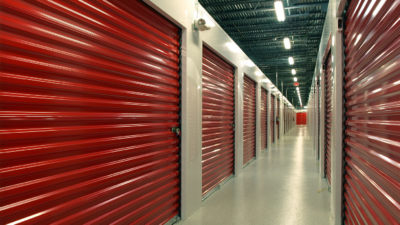 “Sacramento is getting more interest from institutional investors than ever before. Last year’s entry to the market by Gateway (Blackstone) really put Sacramento on the map for a lot of industrial buyers outside our market. A few factors have created the perfect scenario: the cost of construction and steep development fees have kept new supply from being built; e-commerce started booming at the same time the City of Sacramento allowed indoor cannabis cultivation and the Sacramento region is growing rapidly as people and companies are priced out of the Bay Area. We’re at the lowest vacancy rate our market has ever seen, yet we are still seeing record absorption. As a result, rates have jumped dramatically in the last year, particularly in the last six months. Tenants migrating less than 90 miles from the Bay Area will still see a significant savings, and users from the region are adjusting to the new normal. Rates have finally reached the tipping point where we should see more speculative development in the next 18 months than we’ve had in the last 10 years.” — Mark Demetre, SIOR – Executive Vice President
“Sacramento is getting more interest from institutional investors than ever before. Last year’s entry to the market by Gateway (Blackstone) really put Sacramento on the map for a lot of industrial buyers outside our market. A few factors have created the perfect scenario: the cost of construction and steep development fees have kept new supply from being built; e-commerce started booming at the same time the City of Sacramento allowed indoor cannabis cultivation and the Sacramento region is growing rapidly as people and companies are priced out of the Bay Area. We’re at the lowest vacancy rate our market has ever seen, yet we are still seeing record absorption. As a result, rates have jumped dramatically in the last year, particularly in the last six months. Tenants migrating less than 90 miles from the Bay Area will still see a significant savings, and users from the region are adjusting to the new normal. Rates have finally reached the tipping point where we should see more speculative development in the next 18 months than we’ve had in the last 10 years.” — Mark Demetre, SIOR – Executive Vice President
Key Strengths:
Located just 90 miles northeast of San Francisco, the Sacramento industrial market was one of the top growing industrial markets in the country in Q1 2018. Over 17 million people live within 250 miles of the market’s core, making it an ideal location for retailers, wholesalers and third-party logistics (3PLs) to locate. Sacramento is in close proximity to one of the largest, most affluent millennial populations in the country as well as near the plethora of logistics hubs Northern California has to offer to be both a regional and final mile industrial market. While other Northern California industrial markets struggle with labor shortages because of extremely high housing costs and low unemployment rates, Sacramento has the available personnel and housing environment to facilitate further industrial expansion.

Logistics Driver:
The Sacramento industrial market is within a few hour’s drive of a surfeit of logistics hubs including the Port of Oakland, the eighth-largest port in the U.S. and one of the most important agricultural export ports in the country. The growing Port of Stockton is actually the third-largest port in the state of California and the largest inland port in the western U.S. Sacramento can also take advantage of four cargo airports including Oakland International Airport, the 11th-largest cargo airport in the U.S., San Francisco International Airport, San Jose International Airport, and most importantly, Sacramento’s Mather Airport, a growing air freight hub in Northern California.
Vacancy:
The Sacramento industrial market, which totals 157 million square feet of existing space continued to see vacancy rates decline in the first quarter. The overall vacancy rate finished the quarter at a decade low 4.7%, 120 basis points lower than the previous quarter, and significantly lower than the recession high vacancy rate of 14.9% in 2009. The region continued to see significant in-migration of large tenants, evidenced by large move-ins by companies including TK Classics and Pacific Coast Office Furniture.
Absorption:
The two large move-ins, along with a multitude of others, created 1.8 million square feet of occupancy gains, a continuation of the strong occupancy gains posted in 2017, when over 4.7 million square feet absorbed — the most absorption in over a decade. West Sacramento led all submarkets in Q1 2018, accounting for 675,982 square feet of the total 1.8 million square feet of net absorption. The warehouse vacancy rate in West Sacramento dropped from 8.4 to 4.8%, helping achieve a 4.7% market-wide industrial vacancy rate.
Development:
Despite the massive amount of activity in the market, new development was minimal in the first quarter, with only 22,500 square feet completing construction. This comes off a busy 2017 where a decade high of 1.5 million square feet was completed. The drop in new development looks to be temporary with a solid 912,000 square feet under construction at the end of first quarter. The largest amount of new development is centered in the Roseville/Rocklin submarket, where a 300,000-square-foot build-to-suit for McKesson is being developed. McKesson is relocating from the Bay Area, which had over 300,000 square feet under construction at the end of first quarter.
Asking Rents:
With the overall market vacancy rate below the 5% threshold, brokers have noted that the frequency of multiple offers on leasable space has increased dramatically. As a result, owners across the entire market have simultaneously increased asking rates to match competitive bids. The Sacramento warehouse market has never had a higher year-over-year rent growth rate. The last time there were four consecutive quarters of double-digit annual rent growth was between Q1 to Q4 2007, and any increase in Q2 2018 will be the first time ever going five consecutive quarters with such rapid increases. From the current $5.64 per square foot average asking rate, next quarter is expected to set the market’s highest average ever (for warehouse) at or above the $6 per square foot (NNN) pre-recession maximum. Despite the significant increase in asking rents, the Sacramento market is still significantly more economical than the East Bay and Silicon Valley industrial regions.
Historical Data |
||||||
|---|---|---|---|---|---|---|
| Inventory | Overall Vacancy Rate | Overall Net Absorption | New Supply (Construction) | Under Construction | Asking NNN Rental Rate (psf/yr) | |
2008 | 152,372,534 | 11.6% | -999,470 | 894,209 | 204,919 | $6.12 |
2009 | 152,556,453 | 13.6% | -2,896,326 | 85,337 | 33,060 | $5.40 |
2010 | 152,589,513 | 14.9% | -1,850,554 | 33,060 | 36,000 | $5.04 |
2011 | 152,625,513 | 14.4% | 797,559 | 36,000 | 200,000 | $4.68 |
2012 | 152,825,513 | 14.2% | 422,712 | 200,000 | 201,211 | $4.80 |
2013 | 153,225,468 | 12.3% | 3,224,938 | 399,955 | 60,000 | $4.80 |
2014 | 153,575,441 | 10.6% | 2,953,864 | 324,731 | 1,096,202 | $4.92 |
2015 | 154,963,928 | 10.1% | 2,012,831 | 1,388,487 | 378,406 | $5.04 |
2016 | 155,080,080 | 8.0% | 3,317,622 | 116,152 | 1,373,734 | $5.16 |
2017 | 156,654,869 | 5.9% | 4,763,989 | 1,538,989 | 934,770 | $5.64 |
Q1 2018 | 156,677,369 | 4.7% | 1,897,020 | 22,500 | 912,270 | $6.12 |
| Overall Vacancy Rate Q1 2017 | Overall Vacancy Rate Q1 2018 | Asking NNN Rental Rate Q1 2017 | Asking NNN Rental Rate Q1 2018 | |
|---|---|---|---|---|
10,000-24,999 SF | 4.4% | 4.0% | $7.80 | $9.12 |
25,000-49,999 SF | 6.0% | 4.0% | $6.84 | $8.52 |
50,000-74,999 SF | 4.3% | 2.4% | $5.52 | $6.24 |
75,000-99,999 SF | 7.3% | 5.2% | $5.64 | $6.00 |
100,000-249,999 SF | 9.1% | 6.5% | $4.68 | $5.28 |
250,000-499,999 SF | 9.2% | 5.2% | $3.60 | $3.84 |
500,000 SF + | 21.2% | 6.2% | $4.32 | $3.60 |
Source: Colliers International
For more insights, learn about the top 10 U.S. industrial emerging markets positioned to experience the most robust increases in demand from occupiers and owners. Read all the past market spotlights here and stay tuned for more Industrial Markets of the Month!

 Colliers Insights Team
Colliers Insights Team
 Craig Hurvitz
Craig Hurvitz
 Aaron Jodka
Aaron Jodka